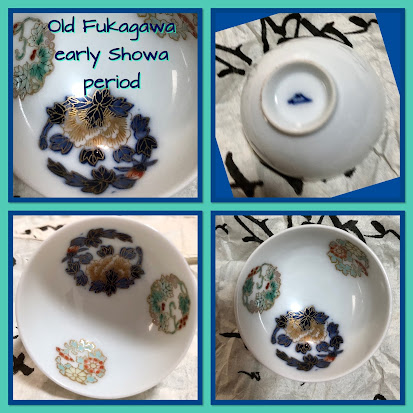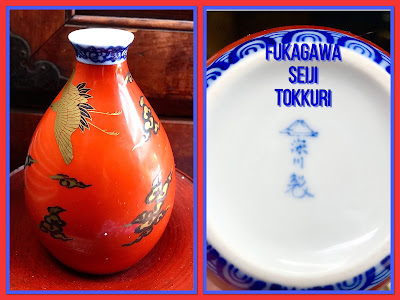I am building a collection of marks with their general time periods. It is a work in progress.
I am thankful for the book "Meiji Arita..." for help with additional marks of the Meiji period.
Both Fukagawa Seiji and Koransha were established by the Fukagawa Family (with others) and they have held the leadership in both companies throughout. Seiji Kaisha is interwoven in the mix as well, having been established by Koransha people (which lasted about twenty years).
The Fukagawa family made ceramics for generations but in 1879 they established Koransha. After the death of the father in 1889, the second son began Fukagawa Seiji in 1894. Obviously the companies are intertwined as they are both headed by Fukagawa descendants.
Here are some helpful sites for both Koransha and Fukagawa Seiji (some English, some in Japanese with great pictures):
http://www.koransha.co.jp/koransha/koransha_english.html
http://www.fukagawa-seiji.co.jp/cotp/forenglish.html
http://www.fukagawa-seiji.co.jp/archive/index.php
http://www.ac.cyberhome.ne.jp/~momochi-linden/aaa.html
This one is in Japanese but has some Fukagawa and Koransha marks ranging from late Meiji to early Showa period.
MARKS
I will break the marks down by decade as a general rule, but keep in mind that there will be overlap as Fukagawa/ Koransha did not start and stop marks by decade. Some marks continued for decades.
Circa1860's
Hichozan Fukagawa Sei c. 1868-1870
Circa 1870's
Circa 1880's
Circa 1890's
Lesser quality ware sold after the close of the company
Seiji Kaisha 1879-1897 ( the Seiji Kaisha mark was used for several years after the close of the company). The lesser quality wares were decorated after the close of the company by former workers and others who used the Seiji a Kaisha mark. Trademark laws were not created at that time. Marked blanks were later decorated and sold by others.
Circa 1900's-1920

C. 1900-1910
Circa 1920's
According to the Koransha company website this mark was from the early Showa Period 1926~
Circa 1930's
This Koransha vase is believed to be circa 1930's
Pre war
Pre war
Circa 1940's
During the war years production continued domestically to some extent under government control, but there were no exports.
Circa 1950's/1960's
Used on dinner ware for foreign markets
Circa 1970's~

KORANSHA
From 1975~
Circa 1980~
Fukagawa
Fukagawa Iroe Saiji Mark from latter part of 20th Century (c.1980's)
.
******************************************
2015 Store Fukuoka Daimaru Display
Also see: http://www.meiji-imari.com/en/meijiimari_en/meijiimari03.html
http://www.fukagawa-seiji.co.jp/archive/index.php*****************
*************




































